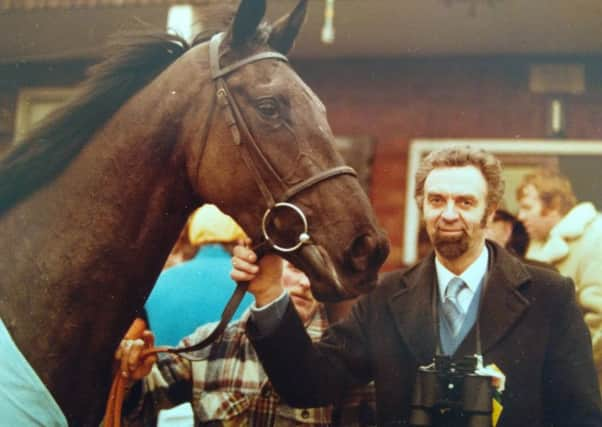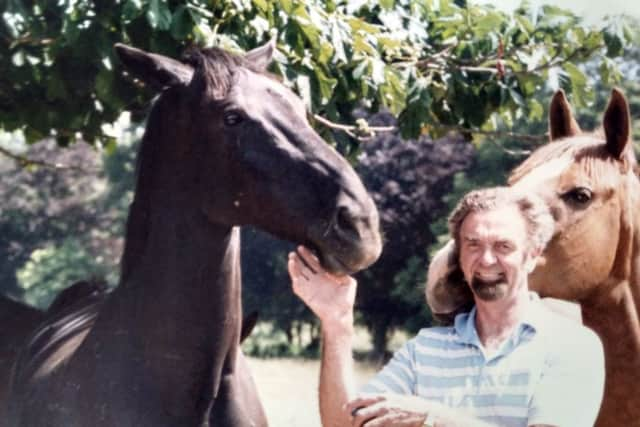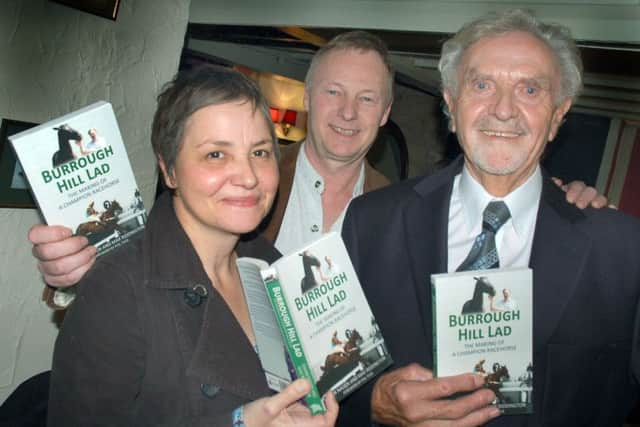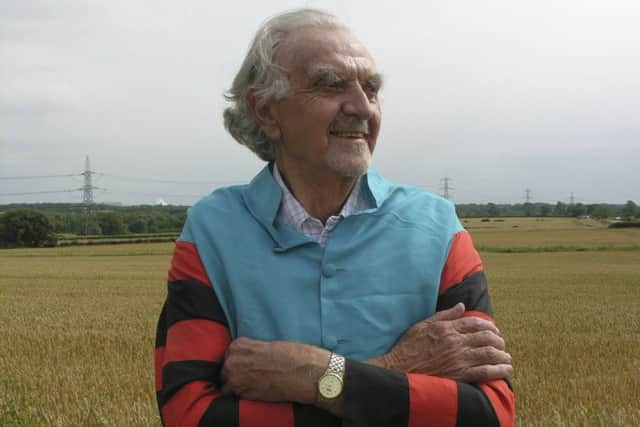The remarkable life of Burrough Hill Lad owner Stan Riley


Stan shot to prominence, largely unwanted, in the mid-1980s as owner and breeder of champion racehorse Burrough Hill Lad, who became perhaps the greatest chaser of his era.
Following his death last month, aged 92, a memorial service will take place on Friday, December 20 at St Mary’s Church in Burrough-on-the-Hill (11am).
Advertisement
Advertisement
The small parish church, where he was baptised, confirmed and married, is a fitting place to complete the circle of Stan’s rural life.


He spent more than half his life in Burrough, and all but the last months in the Leicestershire countryside.
But his remarkable achievements in racing, from homespun beginnings, propelled him into undreamt-of social circles.
“That is the thing. Horse racing is an expensive sport and most owners are wealthy people, but my dad wasn’t and he beat them,” said Stan’s daughter Sue.
Advertisement
Advertisement
“I don’t think that ever rally sunk in for him. I was very proud of him.”


As would one day turn out with his famous racehorse, Stan’s story almost never got started, having been given only a fighting chance of survival after his premature birth.
But a typically hard upbringing as the son of a tenant farmer at Burrough helped build fitness and strength.
His traditional rural upbringing sparked his passion for horses, mirroring his older brother Albert, and saw him become immersed in the life of the local hunt.
Advertisement
Advertisement
“The theme was definitely the horses all the way through his life, right from riding carthorses when he was tiny on his dad’s farm.


“It didn’t have to be a top-flight racehorse – he loved the animal more than the racing.
“He loved to wander around the field and have a chat with them – that was when he was in his element.”
Like his father, Stan started out as a tenant farmer when he was married, taking on a smallholding just a short walk up the lane, but his career path would follow a radically different route.
Advertisement
Advertisement
An entrepreneurial streak quickly emerged and the farmer was quick to spot a business opportunity when Dr Beeching’s rail cuts took effect in the 1960s.
With many rural lines closed and rails removed by scrap merchants, Stan collected the thousands of railway sleepers left behind.
A sawmill was set up in John O’Gaunt and a timber merchants business launched.
Remarkably, this exhausting toil, hauling heavy wood up filthy railway embankments, would lead to a Cheltenham Gold Cup win and tea with the Queen Mother.
Advertisement
Advertisement
The money made from the discarded timber allowed him to indulge his passion and gradually build a collection of horses.
Always on the lookout for a new business venture, Stan went into retail, getting a good price for an impressive, but rundown house in the village where he set up a post office and shop.
As new village postmaster, he decided to develop part of the house into a tea room which was later expanded and then transformed into a popular restaurant.
“He had a twinkle in his eye and a cheeky smile,” Sue said.
“You just never knew what he was going to get up to next.”
Advertisement
Advertisement
But the combined costs of running a business and an expensive equine hobby would eventually lead to an agonising dilemma.
“When he sold up everything it came down to ‘do I sell the business and keep the horses, or keep the business and sell the horses?’”, Sue explained.
“He decided to sell the business, but could only keep one horse. And that was Burrough Hill Lad.”
As it turned out, these dire straits had set racing history in motion.
Advertisement
Advertisement
“His friend tried to talk him into keeping a different one, but he stuck to his guns,” Sue added.
“He stood out to dad – he always said what a lovely gallop he had.
“But he never thought he would win a big race. It turned out beyond his wildest dreams.”
Burrough Hill Lad, or Buzby as he became known, first showed glimpses of real form by winning a decent race at the Grand National meeting at Aintree in 1981.
Advertisement
Advertisement
Three years later, with the help of up-and-coming trainer Jenny Pitman, Stan was the owner of the most famous steeplechaser in the country after a breathtaking run of form.
From late December 1983 to Boxing Day 1984, Burrough Hill Lad won nine of his 10 races, including the Welsh National, the Cheltenham Gold Cup, the Hennessy Cognac Gold Cup and the King George VI Chase.
While Stan was living every owner’s dream, the limelight didn’t come naturally to a shy tenant farmer from a small Leicestershire village.
“I don’t think it ever sat easily with my dad,” Sue explained.
Advertisement
Advertisement
“He would be more comfortable in the company of horses than people.”
But while not overly keen on the extra attention from over-eager punters, Stan was willing to make an exception.
“His biggest thrill was meeting the Queen Mother, and he met her more than once. But he used to get so nervous beforehand.
“He got invited up to the Royal Box a few times to have a cup of tea with them, and then the next race would be coming up and we’d be off again.”
Stan is survived by his daughters Diane and Sue and a son, Philip.